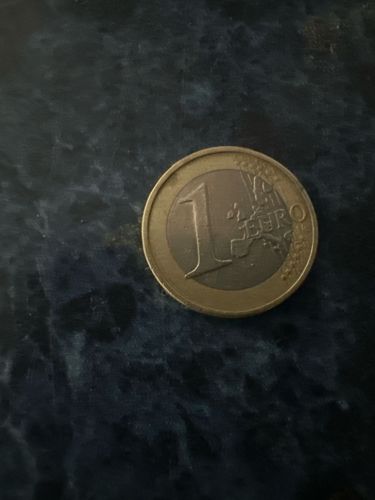1 Euro Coin
Country of Origin: Eurozone (e.g., Germany, France, Spain, etc.)
Year of Issue: From 2002 onwards (cannot be precisely determined from image)
Denomination: 1 Euro
Composition: Inner part: Cupronickel (Copper 75%, Nickel 25%); Outer part: Nickel Brass (Copper 75%, Zinc 20%, Nickel 5%)

Brief Description
The coin features a bimetallic design with a silver-colored inner core and a gold-colored outer ring. The obverse side (shown) displays a large numeral '1' indicating the denomination, alongside the word 'EURO'. The background depicts a map of Europe with 12 stars, symbolizing the original 12 member states of the Eurozone. The specific national side (reverse) is not visible in the image.
Historical Significance
The introduction of the Euro coins and banknotes in 2002 marked a monumental step in European integration, making it one of the largest currency changes in history. It replaced individual national currencies of participating member states, facilitating trade, travel, and economic stability across the Eurozone. The 1 euro coin, being a common denomination, is a symbol of this unified economic and monetary area.
Estimated Value
The face value is 1 Euro. For circulated coins, the numismatic value is generally equal to its face value, unless it's a rare commemorative issue or in uncirculated proof condition. Special issue coins or certain mint errors can be worth more.
Care Instructions
To preserve its condition, handle the coin by its edges to avoid transferring oils and dirt from your skin. Store it in a cool, dry place, ideally in a coin holder, album, or slab specifically designed for coin storage. Avoid cleaning the coin, as this can often diminish its value and damage its original patina, especially for collectible specimens. If absolutely necessary, consult a professional numismatist for cleaning advice, though general circulation coins are rarely worth professional cleaning.
Created At: 2025-09-06T11:12:39.264890